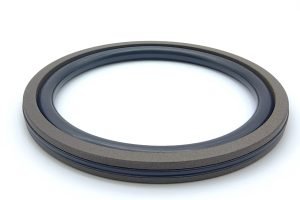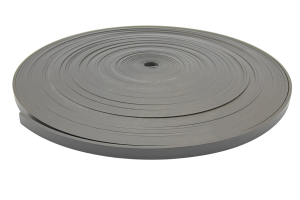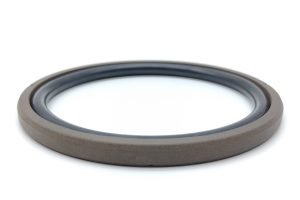We all know that hydraulic transmission uses pressurized liquid to achieve power transmission through changes in sealing volume. Just like the hydraulic cylinder, the pressure energy of the hydraulic oil is converted into linear reciprocating motion of the piston rod by alternately feeding and discharging oil into the left and right sealing oil chambers.
Copper gasket sealing method. The copper pad is made of copper material and relies on the extrusion and deformation of the copper pad to seal. It has a simple structure, easy assembly and disassembly, high temperature resistance, high pressure resistance and long service life. It is mainly used for flat static sealing of the threaded end face of hydraulic pipe joints.
Combination gasket sealing method. The combination gasket is made of a rubber ring and a metal ring that are integrally bonded and vulcanized. It is standardized and relies on the extrusion deformation of the rubber for sealing. It has a simple structure, easy assembly and disassembly, high pressure resistance and low cost. However, the rubber is not resistant to high temperatures and is prone to aging. It is mainly used for static sealing of the threaded end face of hydraulic pipe joints.
ED sealing ring sealing method. ED sealing rings are generally made of rubber and rely on the extrusion and deformation of rubber to seal. It has a simple structure, easy assembly and disassembly, high pressure resistance and low cost. It is mainly used for static sealing of the threaded end face of hydraulic pipe joints.
O-ring sealing method. O-rings are generally made of rubber and are sealed by extrusion and deformation of the O-ring. It has a simple structure, easy assembly and disassembly, high pressure resistance and low cost. It can be used not only for plane static seals, but also for cone surface static seals, radial static seals, reciprocating motion seals, and rotary motion seals at low speeds. It is the most widely used sealing element.
Y-shaped sealing ring sealing method. The Y-shaped sealing ring is a pure one-way seal that relies on the close contact of its lip with the sealing surface for sealing. The adhesion force between the lip and the sealing surface changes with the change of the oil pressure. When the pressure increases, the lip and the sealing surface adhere more closely to improve the sealing ability. It is mainly used for one-way sealing of the reciprocating movement of the piston rod. When installed, the lip faces the oil chamber side.
V-shaped sealing ring sealing method. The V-shaped sealing ring is a pure one-way seal made of multi-layer glue-coated interwoven materials. It is usually used by stacking three rings: a pressure ring, a sealing ring, and a support ring. The sealing mechanism of V-shaped sealing rings is the same as that of Y-shaped sealing rings. When the pressure is high, the number of sealing rings can be increased, but the structure is complex, the volume is large, the friction resistance is large, and the cost is high. It is mainly used for one-way sealing of the reciprocating movement of the piston rod. When installed, the lip faces the oil chamber side.
Glyd ring sealing method.The Glyd ring is a two-way seal, which is composed of an O-ring and a PTFE ring. The O-ring is the force-applying element, providing pre-compression force and compensation force for the PTFE ring. The cross-section of PTFE rings is generally rectangular. The Grain ring has a simple structure, low friction resistance, and high pressure resistance. It is mainly used for two-way sealing of the reciprocating motion of the piston.
Step sealing method. Step seal is a one-way seal with a structure similar to that of a Grain ring. It is composed of an O-ring and a PTFE ring. The O-ring is the force-applying element, providing pre-compression force and compensation force for the PTFE ring. The cross-section of the PTFE ring is generally stepped. The Ste seal has a simple structure, low friction resistance and high pressure resistance. It is mainly used for one-way sealing of the reciprocating movement of the piston rod. When installed, the trapezoidal port faces the oil chamber side.
Skeleton oil seal sealing method. Skeleton oil seal is a one-way seal, generally composed of an oil seal body, a skeleton and a coil spring. The coil spring can compensate the self-tightening force of the oil seal at any time. The pressure-bearing capacity of the skeleton oil seal is very limited, and high-pressure oil seals can generally withstand pressures up to IMPa. It is mainly used for one-way sealing of the rotating movement of hydraulic pumps and motor shafts to prevent leakage of low-pressure oil from the rotating shaft. When installing, the lip faces the oil chamber side.







